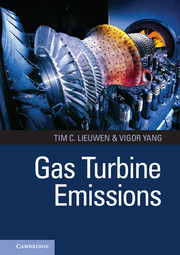Book contents
- Frontmatter
- Contents
- List of Contributors
- Foreword
- Preface
- Part 1 Overview and Key Issues
- 1 Aero Gas Turbine Combustion
- 2 Ground-Based Gas Turbine Combustion
- 3 Overview of Worldwide Aircraft Regulatory Framework
- 4 Overview of Worldwide Ground-Based Regulatory Framework
- Part 2 Fundamentals and Modeling: Production and Control
- Part 3 Case Studies and Specific Technologies: Pollutant Trends and Key Drivers
- Index
- References
3 - Overview of Worldwide Aircraft Regulatory Framework
from Part 1 - Overview and Key Issues
Published online by Cambridge University Press: 05 June 2013
- Frontmatter
- Contents
- List of Contributors
- Foreword
- Preface
- Part 1 Overview and Key Issues
- 1 Aero Gas Turbine Combustion
- 2 Ground-Based Gas Turbine Combustion
- 3 Overview of Worldwide Aircraft Regulatory Framework
- 4 Overview of Worldwide Ground-Based Regulatory Framework
- Part 2 Fundamentals and Modeling: Production and Control
- Part 3 Case Studies and Specific Technologies: Pollutant Trends and Key Drivers
- Index
- References
Summary
Whether they operate in the air, on the ground, or at sea, gas turbine engines must deliver safe and reliable operation, high efficiency, and environmentally acceptable emissions. However, engines designed specifically for each of these applications have different environmental impacts and operating constraints that affect the range of technologies that can reasonably be applied and the type of emissions regulatory framework that is best suited to regulate their design, qualification, and operation.
Aero and Industrial Engines – Contrasting Requirements
Aero and ground-based engines can have many similarities. In fact, industrial engines derived from aero engines (aeroderivative engines) are used extensively in industrial service. However, technologies have been applied to industrial engines such that emissions from the lowest-emitting versions of the industrial engine are at least an order of magnitude lower than the original aero engine. These emissions reductions are achieved in a number of ways:
Natural gas fuel reduces conventional combustor NOx emissions by nearly 50 percent compared to jet fuel, primarily by reducing adiabatic flame temperature.
Water injection or use of dry low-emissions combustor technology reduces remaining NOx by approximately 90 percent.
Catalytic exhaust gas cleanup reduces what emissions are left by approximately 90 percent.
- Type
- Chapter
- Information
- Gas Turbine Emissions , pp. 81 - 94Publisher: Cambridge University PressPrint publication year: 2013



